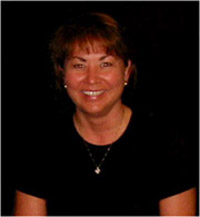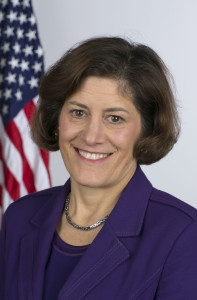

As part of the Hiring Excellence campaign, OPM is going on the road to speak with the federal HR community in the field. The goal is to better educate HR specia...
The Office of Personnel Management is optimistic its new Hiring Excellence campaign, which the agency officially launched earlier this year, will yield better results to a series of familiar problems.
The complaints from agency HR specialists, hiring managers and job applicants aren’t new:
USAJobs.gov is difficult to navigate. Hiring managers aren’t reaching the most qualified applicants. And the process itself just takes too long.

But OPM’s new Hiring Excellence program isn’t the same initiative with a new name, said Acting OPM Director Beth Cobert.
“You can see pockets of people all over where we’ve managed to get great talent,” she said during a May 3 roundtable with reporters. “The goal of this effort is to make it more systematic, more comprehensive and not just anecdotal.”
As part of the Hiring Excellence campaign, OPM is going on the road to speak with the federal human resources community in the field. The goal is to better educate HR specialists and hiring managers about the wide variety of authorities and flexibilities they already have to recruit and hire new talent.
OPM and agencies have been playing “catch-up” in recruiting and hiring new, qualified talent for a variety of reasons, Cobert said. Years of budget uncertainty mean agencies have lost their “recruitment and hiring muscle.”
“It is very hard to think about strategic recruitment when you don’t know what your budget is going to be or you don’t have one,” she said. “Those muscles, when you don’t exercise them, become a problem.”
Online applications also make it easier for people to apply to more jobs than ever before, Cobert said. That means agencies have the more difficult task of weeding through thousands of applications to find the best candidates — people who have the right skills for a specific job.
That requires a heavier lift on the part of the agency HR community.
“The HR staffs are shrinking, but the workload is increasing,” said Kimberly Holden, deputy associate director for employee services at OPM. “You used to have 25-30 people apply for a position. You now have thousands of applications. We’ve introduced automation, so they have to look at thousands of applications for the entire organization, for the entire agency. That shift is one thing.”
The key to attacking this problem, Cobert said, is fostering better collaboration between an agency’s HR specialist and hiring manager.
“The hiring manager-HR partnership is fundamental to making this work for everybody,” she said. “When you write a job description, you need to accurately portray the real skills you need to do that job well. You need to find effective ways to assess people against those skills.”
Raymond Limon, HR director and deputy chief human capital officer for the Interior Department, wouldn’t describe the relationship between an agency’s HR and hiring managers as broken but one with competing priorities. HR specialists think in terms of government acronyms and regulations, he said, not about the specific skills that the best candidates should have for a job.
“The HR people do have a lot of rules and procedures that they’re required to follow, starting with the Pendleton [Civil Service] Act all the way through to where we are today,” Limon said. “And then you have the supervisors … who probably got to be a supervisor based on their technical skills versus their management skills. They both come with public service motivations. They both are here to be a part of something bigger than themselves, but also they’re asked to focus on different things.”
OPM is going on the road to speak with agency hiring managers and specialists in the field. It plans to visit 33 cities in 19 states this fiscal year and into the next, Holden said. The agency has visited Denver, Colorado Springs, Kansas City and several cities in California so far.
“The feedback and the reaction has been very positive,” Holden said. “It’s been a long time since OPM has been out in the field doing these types of sessions and offering this type of face-to-face workshops with our experts.”
OPM launched its Hiring Excellence website Tuesday, which lets agency HR specialists and hiring managers register for the agency’s learning sessions and leads them to resources they can reference later.

Another piece of the campaign is a series of incremental updates to USAJobs.gov, which OPM will continue to make throughout the year.
“USAJobs is a work in progress,” Cobert said. “We recognize that we have a ways to go. We spent an enormous amount of energy getting feedback from our users, applicants and from agencies about how to make it a more effective tool for 2016.”
OPM is releasing new updates to the USAJobs.gov every six weeks. The focus this year is on the job applicant experience, said Dan Thibodeau, deputy program manager for USAJobs.
The first round of improvements, which included a tool to help candidates track their progress in the application process and a resume builder, came out in February.
New tools on USAJobs will sort through applicant resumes and match potential candidates to jobs based on their specific skill sets.
Thibodeau said the improvements are also meant to help agencies ensure that the work to recruit and hire new talent is “actually meaningful.”
“They can go in and find out where the talent is in USAJobs geographically on a map,” he said. “They can compare that to where the jobs are and actually see if they’re matching up or see if they need to look elsewhere to find talent that they need. They also have tools where they can go in and look at who’s viewed their jobs and who’s applying [and] where they’re applying from, so they can find out if maybe an event they had actually paid off.”
For Interior, a more strategic approach to hiring is welcome, Limon said, as his agency has at least 350 different job occupations.
“Many other agencies are already a leg up on this,” he said. “The [Intelligence] Community has been doing this a long time. We’re playing catch-up, and this is the right step to take.”
Copyright © 2024 Federal News Network. All rights reserved. This website is not intended for users located within the European Economic Area.
Nicole Ogrysko is a reporter for Federal News Network focusing on the federal workforce and federal pay and benefits.
Follow @nogryskoWFED
